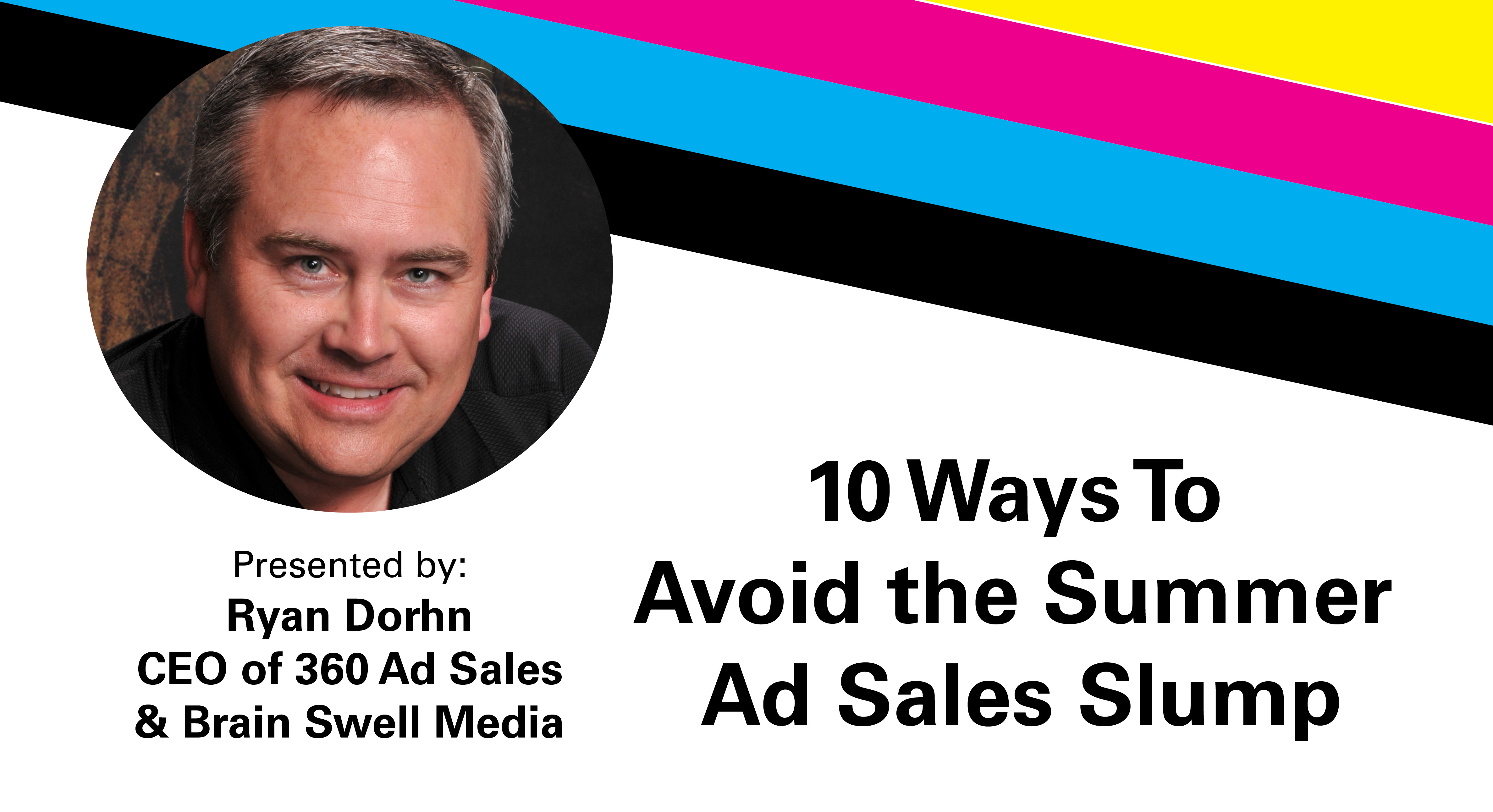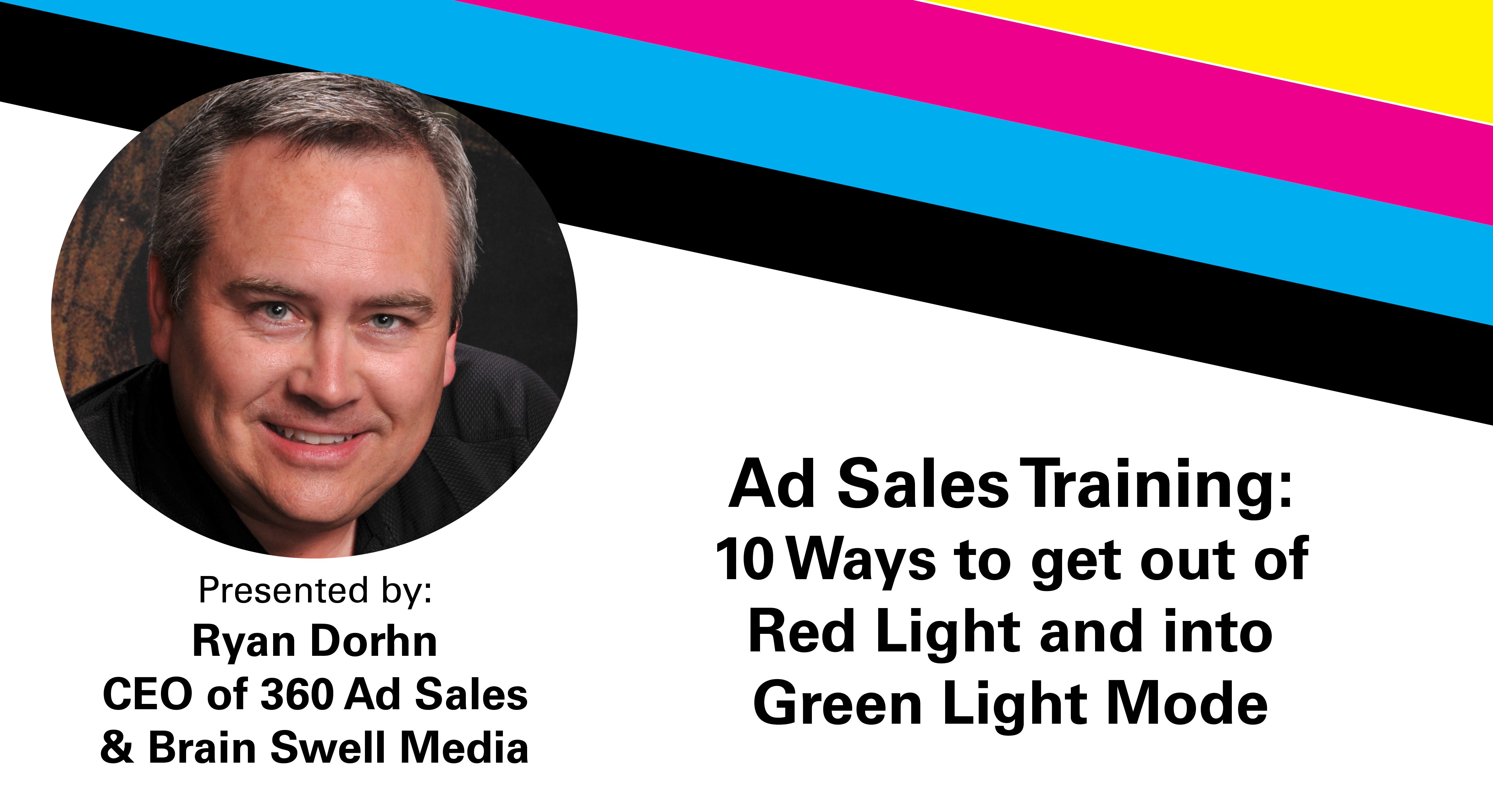Shweiki Media Printing Company is excited to announce that they’ve once again teamed up with Ryan Dohrn—founder of Brain Swell Media, Publisher of Sales Training World, and creator of the 360 Ad Sales Training system taught to over 4,000 sales people around the globe — to present salespeople with a webinar on strategies and sales techniques to help avoid the summer ad sales slump.
1. Get On Agencies’ RFP Lists Early
Most publishers focus on agencies in the fall, so by putting together media plans in July and August, one can begin to make the media buys as fall approaches. Getting on agencies’ RFP lists early (as the process usually takes about four to five months in itself) can be accomplished by putting together quality sales demos, which should be short—under two minutes—and really explain one’s audience. Typically, media buyers are not buying space or time; they are buying audience and engagement. That said, it’s a good idea to explain to the media buyer how one can help them engage with an audience.
2. Eliminate Excuses
The best way to succeed is to eliminate excuses. To do this, one should stop and evaluate their own character, habits and situations—the circumstances, time management habits, personal pitfalls—and create an action plan for success. Every time that one comes up with an excuse, or hears an excuse, they should write it down and develop an action plan for how to overcome these self-imposed limitations.
3. Review Comparison Reports
One should review their comparison reports to make sure that they’re not missing any advertisers from last year. This can be done by filing through CRM tools and pulling a comparison report. Very often salespeople don’t run comparison reports, and occasionally they forget an advertiser that ran at the exact same time last year. It’s important to remember that advertisers are very cyclical and often advertise in seasonal blocks.
4. Visit Competitors’ Websites Often
One good strategy is to go to a competitor’s website and refresh the page ten times to see the full extent of what ads one’s competitor is running. In most circumstances, by refreshing a web page 10 times, one can see all banner ads that are in rotation on that website. What’s important to keep in mind is that sometimes banner ads are set at a heavy rotation, so one might have to refresh a page 15-20 times to view the full rotation. Very often, it’s easy to convince an advertiser that’s currently running with a competitor to advertise on one’s own website as well (especially if they’re getting good results).
5. Review The 10 Critical Ad Sales Questions
A lot of people have questions that they ask on every sales call. It’s necessary to examine what questions one’s own sales team is asking that are different from that of every other salesperson that is going to contact the potential advertiser. One critical question that is good to ask is the following: “If we create the perfect ad for you, what do you want to have happen from that ad?” By asking that question, one can manage the expectations of the advertiser, and both parties go into the deal with an accurate idea of what they can expect of each other throughout the course of their business relationship. The sales team should get together as a group and review their critical questions to ensure that the best questions are being asked on every sales call, which can help everyone avoid the summer sales slump.
6. Review the Prospecting Plan
“The Big 50” is a popular prospecting plan that’s all about attaining fifty brand new customers in the next thirty days. Whether one’s own plan is a “Big 25” or a “Big 100,” it’s important to have one. Otherwise, one isn’t going to have enough fresh, new business to account for the lost customers that one might have each and every month.
7. Block Out Time for Advertiser Retention
It’s critical to block out time in one’s schedule for advertiser retention. This connects to the last tip: one needs to be prospecting on the front end and retaining customers on the back end. Every day, one should block out thirty minutes to send out non-sales retention emails and try to communicate on a daily basis with current advertisers in a non-sales way. This lets advertisers know that it’s not always about sales, and that the sales rep is a resource as well.
8. Make Emails and Voicemails Short and Strong
Most of the time the emails that ad salespeople send are too long and full of fluff. It’s necessary to remember that people are more strapped for time now than ever before. When it comes to emails and voicemails (but especially emails), advertisers scan; they actually don’t read. This means that one wants their emails to be short and to the point, and promise not to waste the advertiser’s time. If one does have a lot of information to share, they should break the message down into short bullet points.
9. Read a Sales Book This Summer
While on vacation, one should take a few hours and read a book that could benefit one’s business. Ninety percent of sales people haven’t even read one business book in the last two years. One doesn’t want to be a part of that statistic, as books are a great way to benefit and improve salesmanship.
10. Come Up With a New, Great Idea
What often happens when one gets into a summer sales slump is that they start simply selling media instead of having marketing meetings with their customers. It’s a good strategy to sit down as a group and figure out something new to present. It’s all about coming up with something unique and different, getting it out there, and pitching it with a fever this summer.






